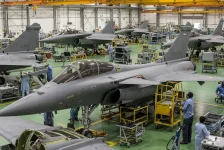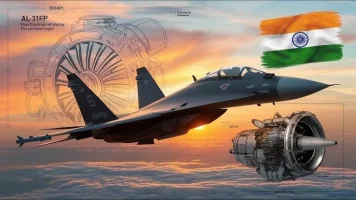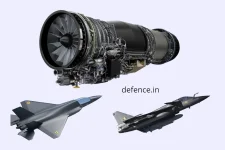- Views: 1K
- Replies: 9
India's top defence research body has achieved a landmark success in developing the technology for hypersonic cruise missiles, but the formal project to create such a weapon is yet to receive financial approval from the Ministry of Defence, the organisation's head has confirmed.
Dr. Samir V. Kamat, Chairman of the Defence Research and Development Organisation (DRDO), revealed that while a critical scramjet engine was successfully tested for over 1,000 seconds, the government's sanction to convert this breakthrough into a deployable missile system is still pending.
The situation places a spotlight on the gap between achieving advanced technological capability and the procedural steps required to weaponise it.
"In hypersonic cruise missiles, we have recently proven scramjet propulsion for more than 1,000 seconds, which is a major breakthrough," Dr. Kamat stated at a recent event.
This successful ground test, lasting approximately 17 minutes, demonstrates that India has mastered the complex and essential technology of sustained supersonic combustion.
At a speed of Mach 5 (five times the speed of sound) or more, an engine running for this duration could theoretically propel a missile across a distance of over 3,000 kilometres.
Scramjet engines are air-breathing systems that use a vehicle's high speed to compress incoming air for fuel combustion, allowing them to operate efficiently at hypersonic velocities.
This technology is vital for hypersonic cruise missiles, which are prized for their ability to travel at speeds exceeding 6,000 km/h while remaining maneuverable.
Despite this technological leap, which places India in an elite group of nations, the path to an operational missile remains unclear. "We hope the government will sanction a program to convert this scramjet propulsion into a cruise missile," Dr. Kamat added, highlighting the need for official and financial backing.
The delay for the cruise missile project contrasts with another high-speed weapon program that has received government support.
The Ministry of Defence has already approved funding for a Hypersonic Glide Vehicle (HGV), a different class of weapon. An HGV is launched to a high altitude by a ballistic missile and then glides to its target at hypersonic speeds.
In contrast, a hypersonic cruise missile is powered by its engine throughout its flight path, allowing it to fly at lower altitudes and change direction unpredictably, making it extremely difficult for enemy air defence systems to track and intercept.
The development of such a weapon is considered a strategic necessity for India, as global powers and regional neighbours, particularly China, are making rapid advancements in hypersonic technology. Both Russia and the United States are also actively developing and deploying various types of hypersonic weapons.
These systems offer the ability to strike high-value, time-critical targets with unprecedented speed, significantly reducing the reaction time for an adversary.
The DRDO's recent success builds upon previous milestones, including the 2020 flight test of the Hypersonic Technology Demonstrator Vehicle (HSTDV), which proved scramjet performance for a much shorter duration.
The 1,000-second test marks a significant advance in key areas like advanced heat-resistant materials and stable combustion under extreme conditions.
However, without formal sanction and funding from the Ministry of Defence, the expertise and technology developed risk remaining at the research level.
The creation of a fully operational hypersonic cruise missile requires substantial investment for building prototypes, extensive testing, and integration with launch platforms like warships or fighter aircraft, presenting a significant hurdle that currently awaits clearance.



